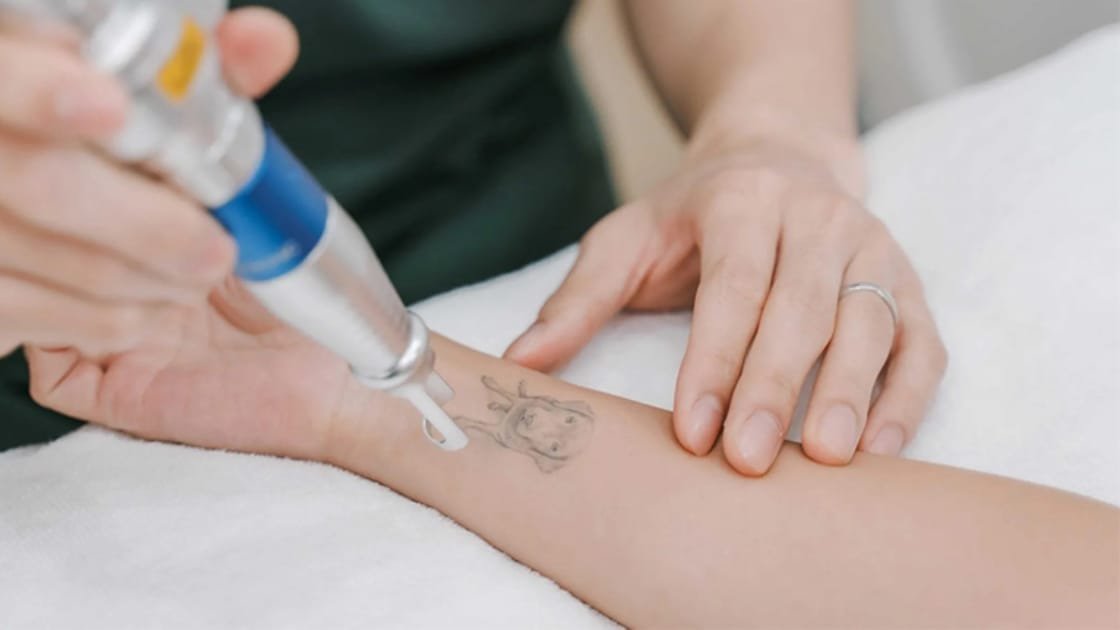Tattoo removal has come a long way in recent years, with Pico lasers leading the charge as one of the most advanced and effective methods for clearing unwanted ink. But can Pico lasers completely remove a tattoo? The answer depends on several factors, including the type of tattoo, the laser technology, and the care taken during and after the removal process.
What Makes a Tattoo More or Less Difficult to Remove?
Not all tattoos are created equal, and their removability can vary significantly. The difficulty of removing a tattoo depends on several factors:
- Ink Color: Darker inks, such as black and blue, are generally easier to remove because they absorb light more efficiently. Lighter colors, like yellow and green, can be harder to break down and may require more sessions.
- Tattoo Size and Depth: Larger tattoos and those that are deeper in the skin tend to take longer to remove. Tattoos applied with greater depth require more energy to break up the ink particles.
- Skin Type: Skin tone and texture can also affect the removal process. Lighter skin types usually respond better to tattoo removal treatments, whereas darker skin may require more caution to avoid complications like pigmentation changes.
- Age of the Tattoo: Older tattoos tend to break down more easily than fresh ones, as the ink has already started to fade over time.
Understanding these variables is crucial for determining how long the tattoo removal process will take and how many sessions will be required to achieve complete removal.
The Science Behind Laser Tattoo Removal
Laser tattoo removal works by delivering high-energy light pulses to break down the ink particles in the skin. Pico lasers use picosecond pulses (one trillionth of a second) to shatter ink particles into smaller pieces. These tiny fragments are then absorbed and eliminated by the body’s natural processes.
The advantage of Pico lasers over older technology, such as Q-switched lasers, is the ability to deliver shorter pulses of energy, which causes less heat buildup. This means more effective ink breakdown with minimal damage to surrounding tissue. Pico lasers are particularly efficient at treating stubborn colors like green, blue, and even certain shades of red, making them a popular choice for tattoo removal.
Does Laser Tattoo Removal Leave Scars?
When done correctly by a trained professional, Pico laser typically does not leave permanent scars. However, there are risks, especially if the removal process is rushed, or if proper aftercare is not followed. Scarring can occur due to excessive heat, improper technique, or infection.
To minimize scarring, it’s essential to have your tattoo removal performed by an experienced technician who uses the correct settings and laser technology. Additionally, following proper aftercare instructions (discussed below) is crucial to reduce the chances of scarring.
Aftercare for Laser Tattoo Removal: Do’s and Don’ts
Proper aftercare is vital to achieving the best results and preventing complications. Here are a few important do’s and don’ts:
Do’s:
- Keep the Treated Area Clean and Dry: Gently cleanse the area with mild soap and water. Avoid scrubbing or applying excessive pressure.
- Apply Ointment as Directed: Your technician may recommend using a healing ointment to soothe the skin.
- Protect from the Sun: The treated area should be kept out of direct sunlight. Use sunscreen with a high SPF if exposure is unavoidable.
- Stay Hydrated and Nourished: Supporting your body’s healing process with water and a nutritious diet can help speed recovery.
Don’ts:
- Don’t Pick or Scratch: Allow scabs to form naturally. Picking at scabs can cause scarring and delay healing.
- Avoid Hot Showers or Saunas: Heat can irritate the skin, making the healing process slower and less effective.
- Don’t Apply Harsh Chemicals: Avoid using exfoliants, strong lotions, or other irritants that could disrupt the healing process.
Conclusion: Can Pico Lasers Completely Remove a Tattoo?
DualPico Laser Workstation, offers an effective solution for tattoo removal. While the process is highly effective, it’s important to set realistic expectations. Tattoos that are professionally applied and have not been overly deep or have complicated colors can often be removed completely with Pico laser treatments. However, multiple sessions are typically needed to break down the ink, and aftercare is crucial to minimize any risk of scarring. With patience, consistency, and the right care, Pico lasers provide one of the most advanced methods available for achieving clear, tattoo-free skin.








